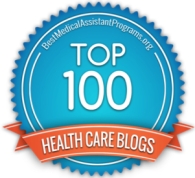As the percentage of large employers that consider a shift to defined contribution and/or private exchange increases, the number of options – and flexibility in those options – must also increase. Consideration for those options rose last year from 14% to 18% among large employers (500+ employees). Further, those who are considering the move to a private exchange want to because of their desire to offer more and better plan options, as well as realize cost-savings. Shifting to the defined contribution framework allows employers to moderate their subsidies to employees, and employees to make better trade-offs among plan options. Additionally, by increasing choices, defined contribution makes it easier for employers to integrate their health incentive and wellness programs by layering them “on top” of the defined contribution.
With this economic opportunity in the market, it is imperative that health plans and enrollment become more tailored to individual and company needs, in addition to the one-size-fits-all solutions of the past and present.
Private health exchanges, according to bswift, like their new Springboard Marketplace, could be the platform to give consumers that greater choice and increase individual decision-making. Given that most large employers who are considering a defined contribution will remain self-insured, bswift is taking a calculated gamble that employers will continue to invest in cost management solutions such as incentives, wellness programs, consumerism as opposed to simply shifting costs to employees under the “fix it and forget it” cost sharing approach suggested by some competitors.
Customize Your Cart
The Springboard Marketplace that bswift has created has the online functionality healthcare.gov could only have dreamed of, and the choice construction of a grocery store. In fact, the terminology the company uses alludes to “Stocking the Shelves” with your benefit choices and “Shopping” for your ideal group of benefits. This is all done through the interactive benefits advisor, Emma, who walks employees through an online step-by-step process to fill their cart with health care options.
For those aware of bswift’s background as a tech company it may not be a surprise that the software and services offered are aimed at streamlining a very sophisticated system, and making the user experience easy. And for those that know the company’s Executive Director of Exchange Solutions Brad Wolfsen, the shopping experience and ease of transition into a new set of consumer options will easily resonate. Mr. Wolfsen, before joining the team, built and led Safeway’s wellness and retail strategy programs, and was the President of Safeway Health.
According to Mr. Wolfsen, the real benefit he sees to bswift’s products are that they, “allow employers to focus on equity for employees and shift to a retail view on providing health benefits.” Or, as the Society for Human Resource Management labels it, From Parenting To Partnering.
New Plans Equal New Decisions
With a growing demand for health benefit options that resemble a choose your own adventure book, but with a set amount of money to spend, the development of software must also be functional for employers and employees. The Springboard Marketplace has been constructed so that functionality can simply be turned on and off, so that choices are simplified. Additionally, since there is not a standard approach to benefit choices and many legacy systems that have to be revamped due to mergers, acquisitions and partnerships, greater automation for employers means less paperwork for HR departments. By making workflow, reporting and administrative work more efficient through automation, cost-savings increase even further.
“The best and brightest clients are currently driving what is in the bswift system now,” says Mr. Wolfsen. “As we move towards expanding the suite of benefit options and meeting compliance standards, we are also investing in the shoppers experience.”
He, along with his colleagues at bswift, believe that their tech company is nimble in ways that others are not, and that with the help of their platform and Emma, more and more employers will begin the migration to defined contribution and private exchanges. If true, that growing shift could redefine how health benefit decision-making is done by employees in the future.

